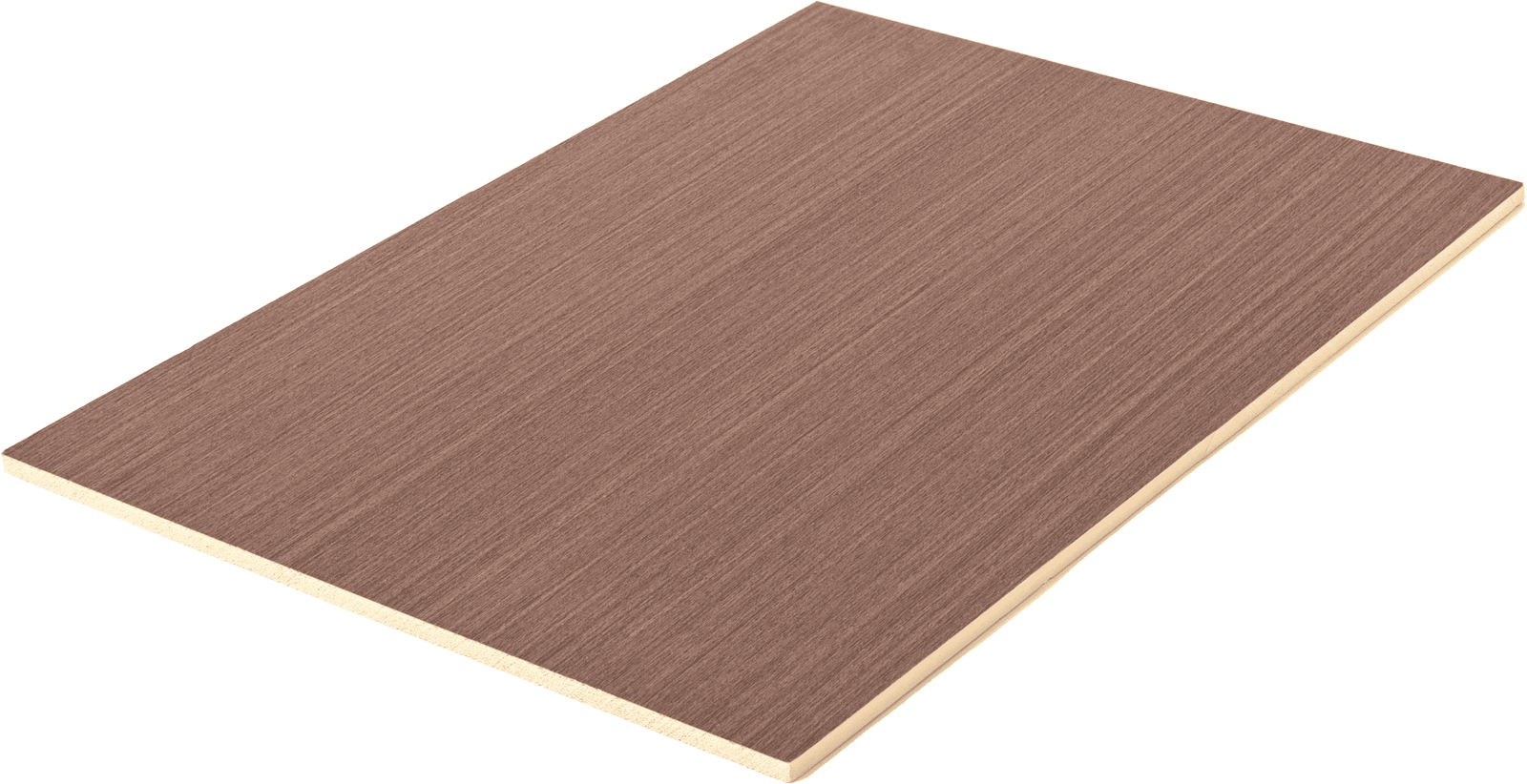Chapa de madera WPC
Para uso decorativo en interiores —especialmente en ambientes húmedos o inestables— el WPC (compuesto de madera y plástico) a menudo supera a la madera maciza. Aunque la madera ofrece una belleza atemporal, con el tiempo puede deformarse, agrietarse o sufrir daños por termitas. En cambio, los paneles con chapa de WPC mantienen su forma e integridad superficial con mucho menos mantenimiento. Son especialmente valorados en proyectos interiores a gran escala, donde la consistencia y la durabilidad son tan importantes como la apariencia. En comparación con la madera, el WPC es más estable dimensionalmente y resistente a la humedad, lo que lo convierte en una solución confiable para zonas de alta humedad como cocinas, baños o viviendas en zonas costeras. No requiere tratamientos ni acabados estacionales, lo que reduce el mantenimiento y los costos a largo plazo.
WPC is a hybrid material made from wood fibers and thermoplastics like PVC or PE. In products such as wood veneer panels, the WPC core replaces solid timber, while a thin layer of real wood veneer is applied to the surface. This blend combines the aesthetic appeal of natural wood with the enhanced performance of engineered materials, giving you the best of both worlds—natural texture and long-term stability. WPC cores are also less susceptible to rot or swelling when exposed to moisture, and they maintain their strength across temperature fluctuations. This makes WPC veneer panels ideal for diverse climates and installation conditions where real wood might degrade more quickly.
El costo puede variar según la especie de madera y el tipo de panel, pero en general, los paneles con chapa de WPC resultan más rentables a largo plazo. Aunque el costo inicial puede ser comparable o ligeramente superior al del contrachapado de baja calidad, el ahorro en instalación, mantenimiento y reparaciones con el tiempo suele hacer que el WPC sea una opción con mejor relación calidad-precio. Para proyectos que requieren escala, durabilidad y un acabado pulido, es una inversión inteligente. Además, los paneles de WPC son más fáciles de cortar y manejar, lo que puede reducir los costos de mano de obra durante la construcción o renovación. Al presentar menos problemas de deformación o defectos en la superficie, generan menos desperdicio durante la instalación, mejorando así la eficiencia general del proyecto.
La elección de la chapa depende del efecto visual deseado. Algunas de las opciones más comunes incluyen roble, nogal, teca y arce, cada una con su propio veteado y tono característico. Cuando se combinan con un núcleo de WPC, estas chapas de madera adquieren mayor resistencia a la humedad y un mejor soporte estructural. Esto las hace adecuadas no solo para paredes y techos, sino también para aplicaciones verticales en muebles, tanto en entornos residenciales como comerciales. Por ejemplo, el roble ofrece una apariencia fuerte y tradicional, mientras que el nogal brinda un acabado más oscuro y sofisticado, muy apreciado en interiores de lujo. La superficie de madera natural garantiza que cada panel tenga un veteado único, conservando la autenticidad estética de la madera maciza sin sus vulnerabilidades estructurales.





